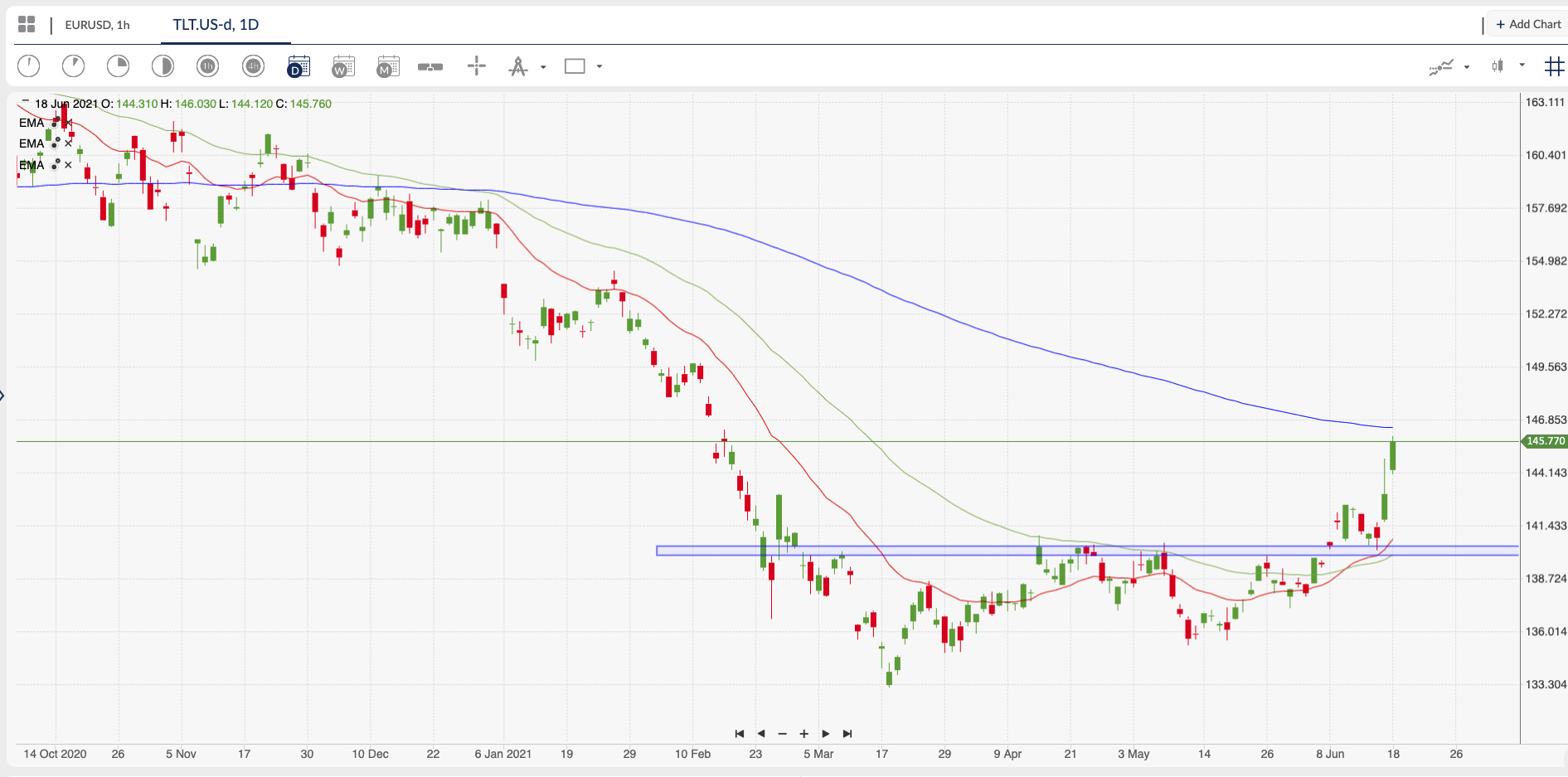Weekly Investing Idea – TLT
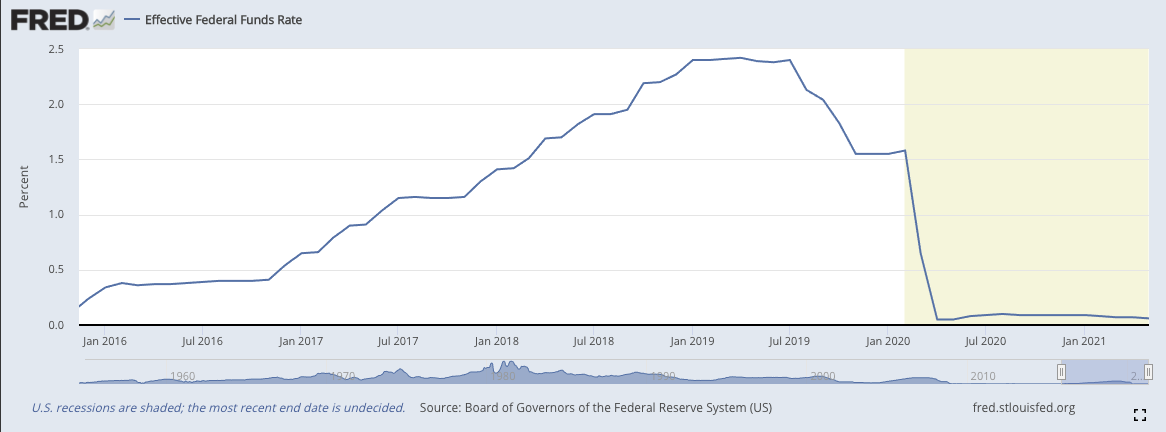

Before the FOMC last week, Treasury Secretary Janet Yellen expressed that she thought the Fed should raise interest rates and that it would be a good thing for the economy. As a former Federal Reserve Chair, she knows too well that during times of crisis the only thing the Fed can do to help is to lower the Federal Funds Rate (FFR) and to conduct Quantitative Easing asset purchases. The Fed does not want the FFR to go negative and with it being effectively at 0% there is no margin for error. Especially in a liquidity event or global economic downturn.
Last Wednesday the FOMC meeting gave the markets something to consider. A lot of market participants are working towards the Fed raising interest rates in the next couple of years to put a lid on the inflation that is seen currently in the Consumer Price Index (CPI). The Fed have said that they believe that the rising inflation as seen in the CPI is transitory and is in direct relation to the supply shocks that occurred when the global economy and supply chains broke down at the start of the coronavirus pandemic. Talk of reflation trade, infrastructure spending, global financial stimulus and re-openings of economies have weighed in on the inflation trade too, and the markets have until recently been convinced that this inflation story is going to run hotter because the Fed are willing to allow it to.
Yield curves steepening, commodity prices rising, cost of energy and food all add fuel to the inflation story fire. So why have the US bond yields stopped going up?
No monetary policy changes were made in relationship to the Feds dual mandate. The USA is still a long way off from full employment and the Fed who believe the price rises are transitory also believe that prices will stabilise once again when the base affects have all rolled out of the data. They did make a change to the interest on excess reserves (IOER) and added 5 basis points, or 0.05% to the interest rate paid to the overnight loan Reverse Repo program. So why would they have done that?
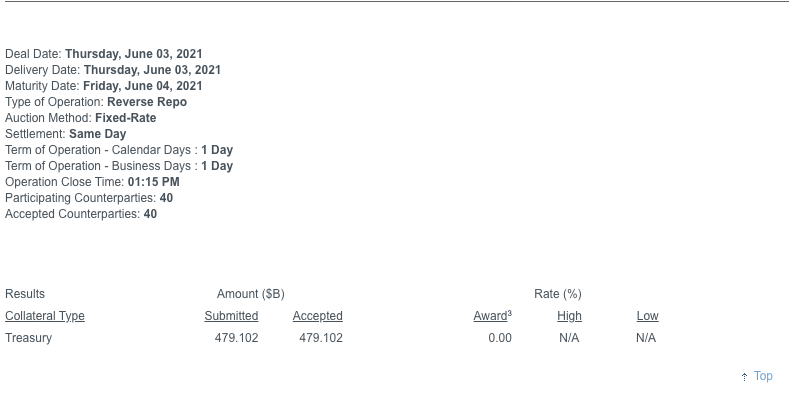

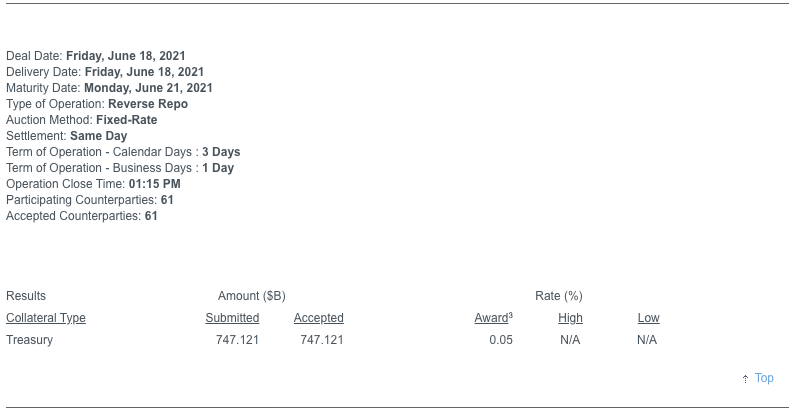

The Federal Reserve needed to encourage the money markets to use the Reverse Repo Operations which are conducted by the New York Fed. On Thursday the 3rd of June, the NY Fed Reverse Repo was $479. 102 Billion at a rate of 0%, on Wednesday 16th (FOMC) the Reverse Repo was up to $520.942 Billion still at a rate of 0%. The following day when the markets could receive 0.05% on their money the Reverse Repo increased by $200 billion to $755.800 Billion. The repo and reverse repo operations are designed to help stabilise the money markets and to keep the FFR within the target band for the interest rate.
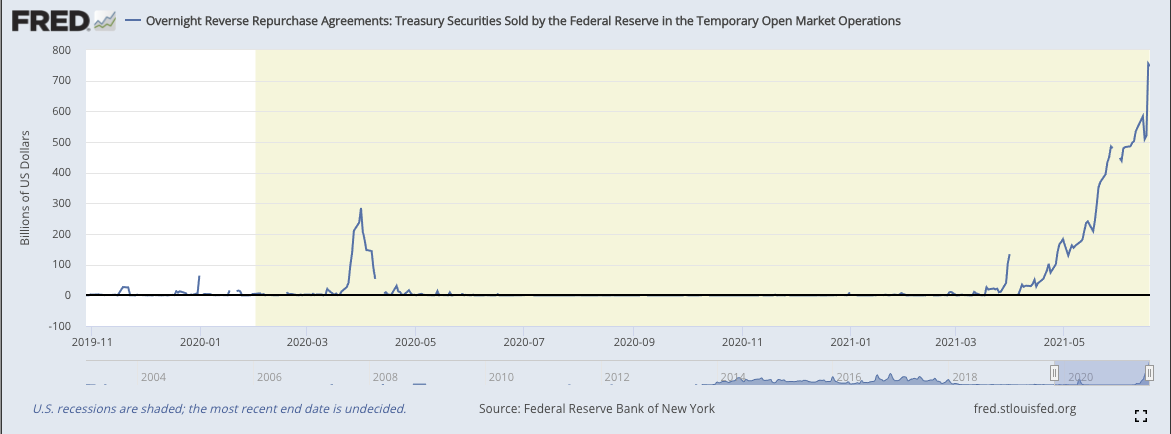

So why was there a need before and why even more so now? Well, more Reverse Repo is occurring now because the commercial banks can make some money by lending their cash to the Fed. The reason they needed to before the FOMC is because there is a shortage of collateral in the financial system and the commercial banks have too much cash in their reserves.
Under normal market conditions the banks would drain their cash reserves by purchasing government debt through the Treasury auctions. These treasury securities that the banks held were used to pay interest to the depositors. They also acted as part of the Supplementary Leverage Ratio (SLR) which was in the news in March this year. The SLR formula is Tier 1 capital / total leverage exposure, and this ratio ensures banks have enough capital in comparison to liabilities in the form of loans to customers. Encouraging the banks to lend but not be exposed to market crashes as Lehman Brothers were with their toxic loans at the start of the Great Financial Crash.
Banks are unable to get enough short-term treasuries and require T-bills more than anything else, as depositors are most likely to want to get their hands on deposited cash in the near term, rather in say 10-30 years’ time. This is due to the uncertainty in the financial world as well as Main Street.
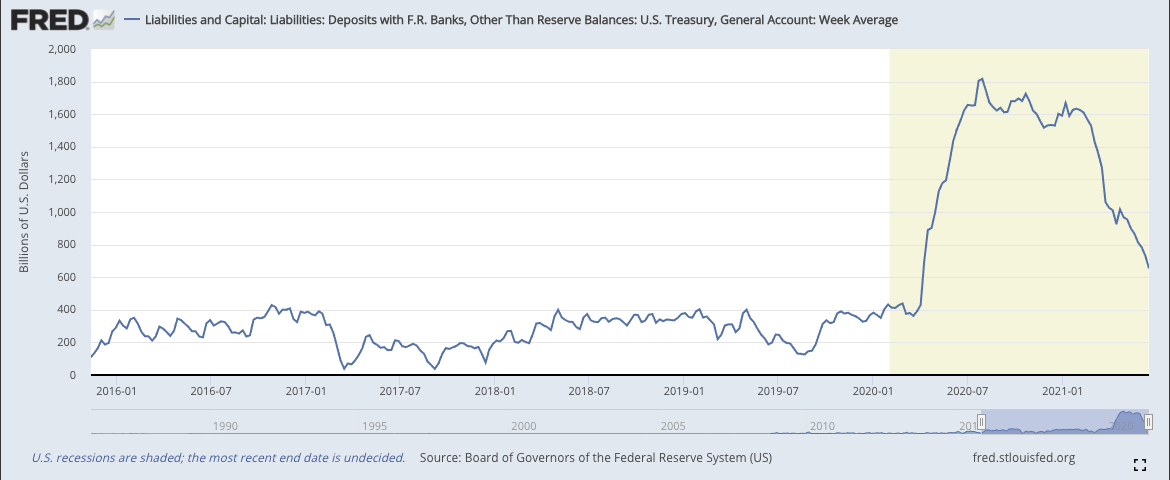

Another problem that commercial banks are having is that the Treasury is unwinding their General Account, which under President Trump and Treasury Secretary Mnuchin was built up with the aim of helping with the covid-19 crisis. The current Treasury Secretary Yellen is drawing down the account to more usual levels as mandated by the Cares Act bill from $1.84 Trillion back down to $500 billion or less. This process of drawing down the Treasury General Account also puts cash into the commercial bank’s reserves, so they must find ways to secure that with Treasury bills etc. and there are just not enough securities.
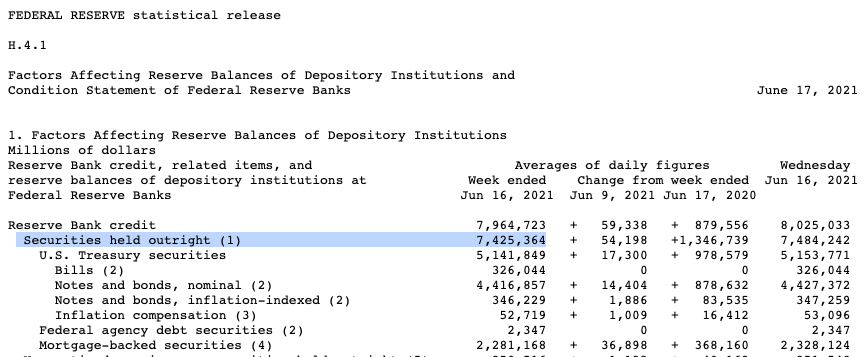

Why are there not enough Treasuries? One major reason is that the Federal Reserve quantitative easing programmes allow the Fed to purchase $80 Billion of Treasuries (minimum) per month. And now the Fed have 7,425,364 Billion ($7.4 Trillion) sat on their books. Another reason for there not being enough Treasuries is because under Yellen the Treasury have reduced their issuance.
Supply and Demand dictates that when there is a greater demand for something than there is available supply, the price of whatever it is that is in demand will rise.
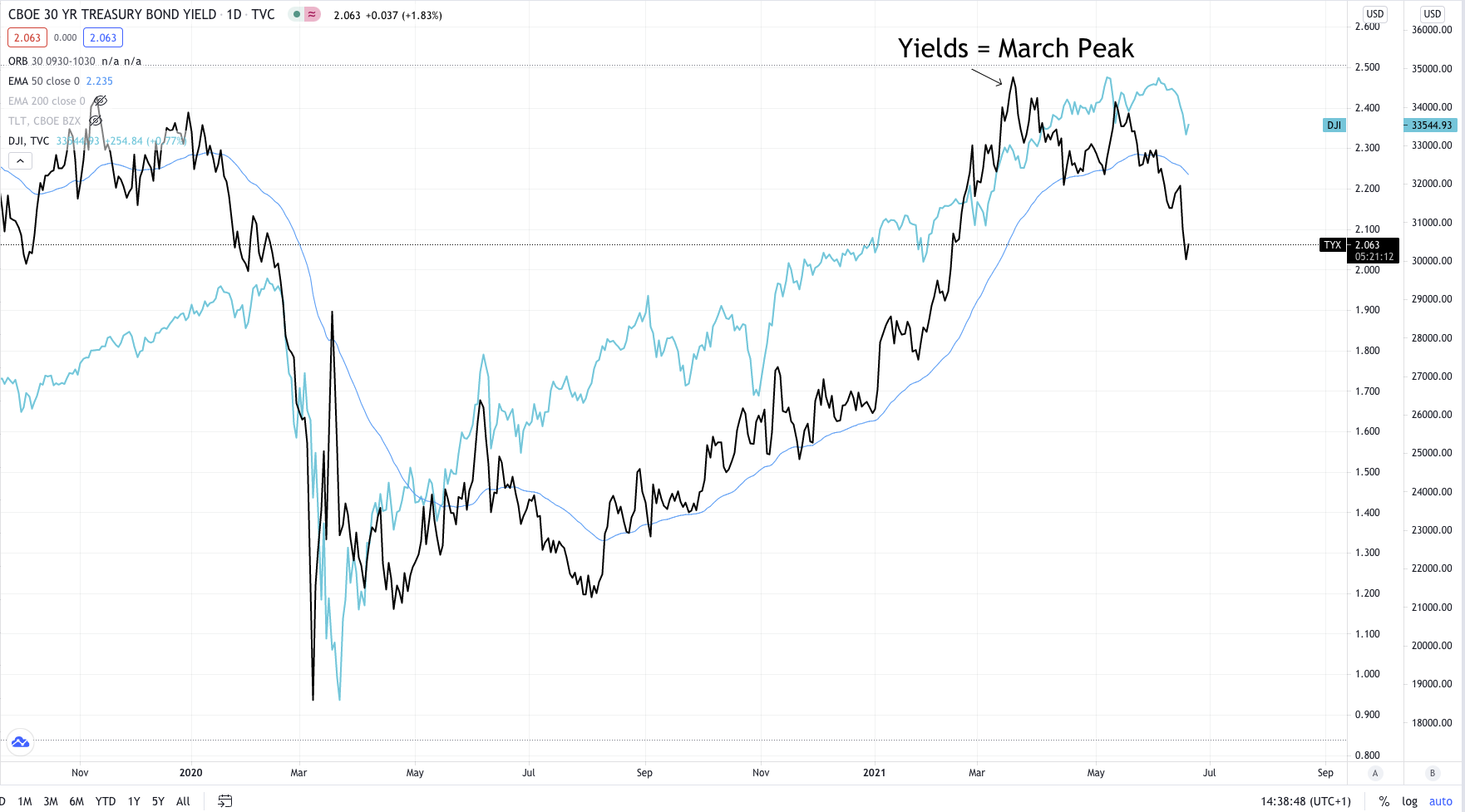

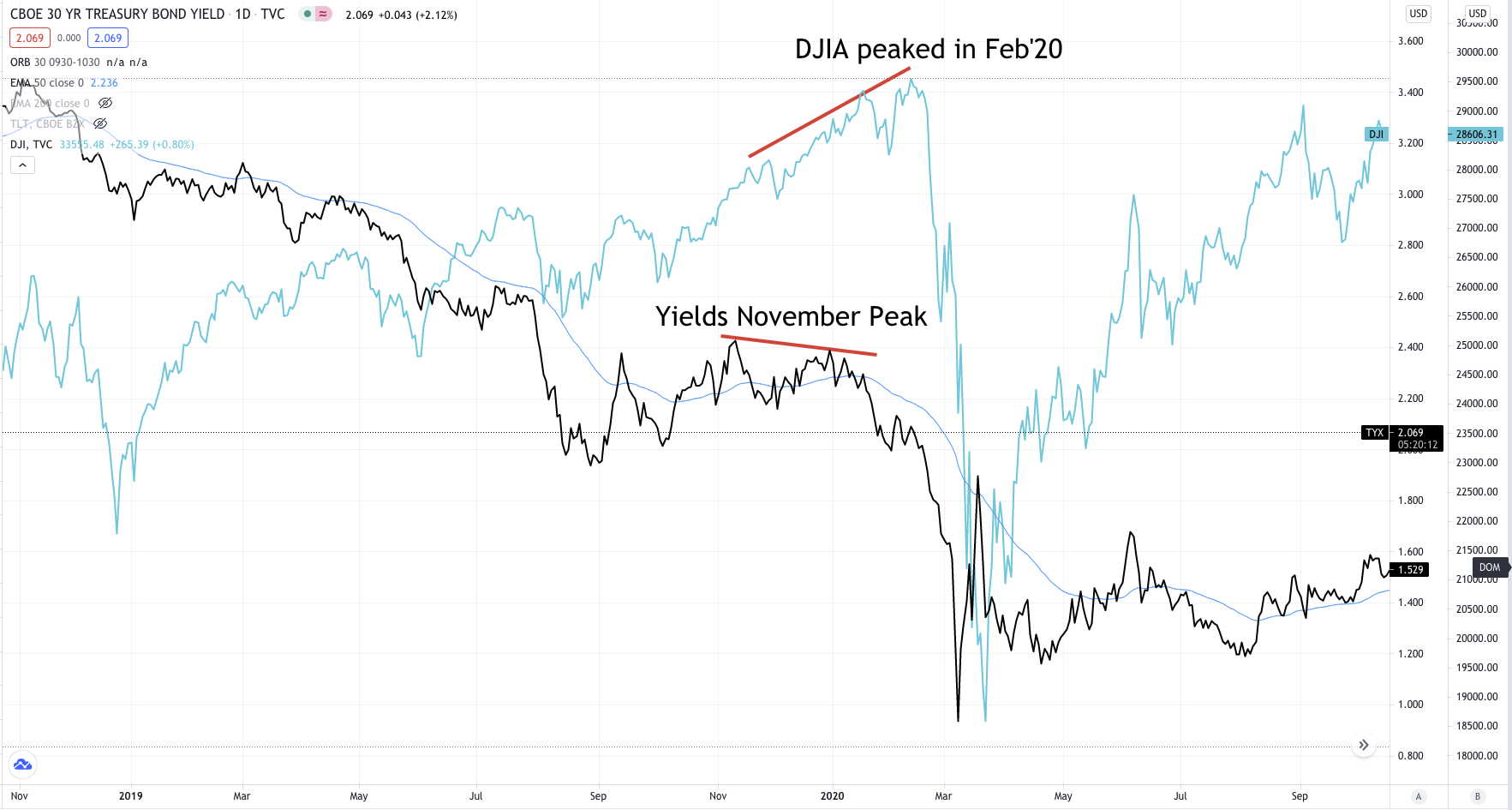

Looking back at the start of the covid-19 market crash, equities took a plunge from February but the yields on the bonds had peaked 3 months earlier. So, for whatever reason at that time, bonds had already made moves higher before the market crash. Looking at the yields now, we can see that 3 months ago the 30-year bond yields had peaked and last week we saw the Dow Jones make a new significant weekly low. It may be different reasons, but the markets often echo previous moves and timings.
The banks need to get their hands on treasuries quickly and one way that they can do that is through the Reverse Repo operations. They can make an overnight loan of cash to the Fed, who in turn will lend them some Tier 1 collateral. Meaning that the Treasury General Account can be drawn down, the banks can keep to their leverage ratios and the Fed can carry on doing their QE while waiting for full employment. The only problem is all the above means yields will continue to fall, and if stocks fall too, there will be a big rush for the exit, stock will crash, the money will be deposited in the banks and then this whole recycling of money and treasuries will just carry on for longer and get bigger and bigger.
Nothing will get resolved doing it this way. They are just prolonging the inevitable. Which is the Fed will have to stop doing QE. But that is probably not going to happen while Fed Chair Powell is in charge.
See real-time quotes provided by our partner.
The TLT had been in a Wycoff accumulation phase and last week broke out of the range to the upside. There could be a moon shot to the 2020 highs, but I would expect a pullback to test the resistance now support line before the next big move, or at least to the recent daily swing high. This may come tomorrow if Chair Powell when being interrogated after his statement to congress sounds more Dovish.
On the daily chart it also shows that the 200 ema is fast being approached by price, so this could be a bit of a roadblock and we could get a pause in the markets. Any dip towards the recent market structures and shorter time frame moving averages I would consider as a buying opportunity under these market conditions. All the way to a policy change by the Fed or for the Treasury to have finished drawing down the TGA.
I am wrong when we see yields heading higher because of new data relating to rising inflation or interest rates being pushed higher by a change in monetary policy by the Federal Reserve. To limit risk I would trail a stop up with the rising 50- or 20-day ema’s, and just re-enter on a pullback if necessary.

